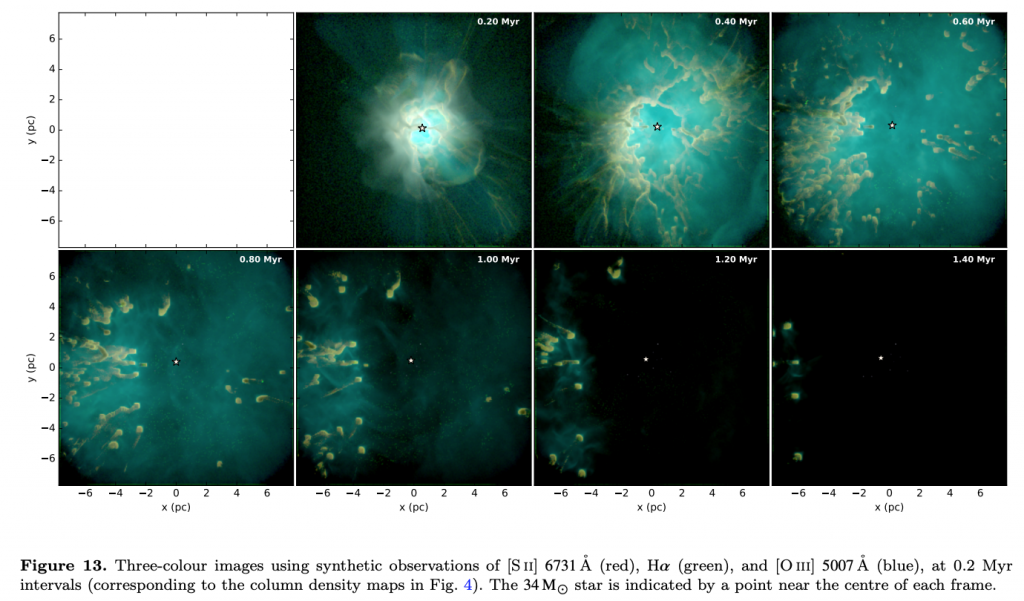
Radiative Feedback from Massive Stars
Dr Ahmad Ali recently completed his PhD in theoretical astrophysics at the University of Exeter, focusing on the numerical modelling of massive stars. Dr Ali is now carrying out his post-doctoral research at Exeter and visited Kent on 20-21 November, to present a research seminar about his current work. He is also collaborating with Justyn Campbell-White, one of the PhD students at Kent. They are using the synthetic observations from Dr Ali’s numerical models to compare the results from simulations to radio-continuum observations of massive stellar feedback in the Galaxy.
Abstract
The thermodynamics of star-forming molecular clouds is dominated by O stars via their radiative feedback. This can affect the formation of new stars: triggering it via gas compression, or inhibiting it via gas dispersal. Numerical simulations provide a way to constrain the relative impact of different feedback mechanisms, explore their dependence on initial conditions, and test observational diagnostics via synthetic observations.
In this talk, I describe how to investigate these processes using Monte Carlo radiative transfer coupled with hydrodynamics. I describe the results of modelling turbulent clouds of 1000 and 10,000 Msol, containing a 34 Msol star, with accurate photoionisation and radiation pressure feedback. The models also include detailed dust microphysics such as absorption and scattering.

Using the resulting gas temperatures, dust temperatures, and ionisation fractions, I also present self-consistent synthetic observations of line and continuum emission (e.g. Halpha and free-free radio continuum). I also track the complex behaviour of the FUV interstellar radiation field, G0, as a function of time and distance from the O star; this shows rapid variations of orders of magnitude across time-scales of a ~Myr, and will therefore influence the evolution of clumps and protoplanetary discs near O stars.